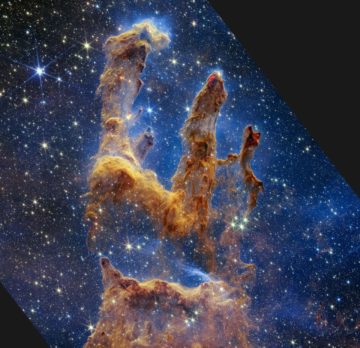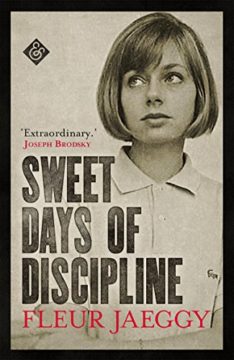Maureen Dowd in The New York Times:
 WASHINGTON — I had always been a bah humbug sort of person about Christmas.
WASHINGTON — I had always been a bah humbug sort of person about Christmas.
It seemed like a season of stress, as my parents scrambled to find the money to buy presents for five kids and have a big feast. I didn’t like the materialism or the mawkishness. Why should there be one week of the year when we were all supposed to be Hallmark happy? “You’re weird,” my mother told me.
Then I took a course on Charles Dickens at Columbia University with the estimable Prof. James Eli Adams, and I began to fathom the magic. As Dickens said in his sketch, “A Christmas Tree,” published in his journal “Household Words” in 1850, “Oh, now all common things become uncommon and enchanted to me.” His biographer Peter Ackroyd wrote that “Dickens can be said to have almost single-handedly created the modern idea of Christmas.” Christmas morally radicalized Dickens. The disparity between the circumstances and fates of different people offended Dickens in the Christmas season. For him, it was a time to think about what we owe one another, how we live with one another; a time to have a proper sense of outrage about inequality and injustice, and to think about the past, present and future and how much they have to do with each other; a time to consider the good values we’ve thrown away and the bad values — selfishness, egotism, social snobbery, condescension and the worship of money — that infiltrate the heart. Dickens became an outsider looking in when his middle-class life got disrupted by cold, grinding reality: His father went to debtors’ prison and, at 12, Dickens had to leave school to work in a bootblacking factory in London.
…As Mitch Glazer, who co-wrote “Scrooged,” the hilarious 1988 movie with Bill Murray, put it: “Dickens hits us with the setup: regret, loss, mistakes, missed love, wasted life, and then the punchline: ‘It’s not too late!’ In every version from his novella to Mr. Magoo to ours, I always get emotional when Scrooge is reborn.” Dickens has taught me that it’s not too late to focus on the sweet memories, like the time my mom somehow bought me a doll’s kitchen I longed for that my parents couldn’t afford, or the way she would be aghast if we didn’t wear red and green.
The magic is there, if you look. So on this Christmas, as Tiny Tim said, God bless us, every one!
More here.
 Todd Rundgren, the record producer, sound engineer, songwriter, and recording artist, has had such a strange career in the music business that it somehow does not seem strange that, at seventy-four, he has been performing in a David Bowie tribute band. This on the heels of a few Beatles-tribute tours. A giant covering giants.
Todd Rundgren, the record producer, sound engineer, songwriter, and recording artist, has had such a strange career in the music business that it somehow does not seem strange that, at seventy-four, he has been performing in a David Bowie tribute band. This on the heels of a few Beatles-tribute tours. A giant covering giants.
 After Bunny’s arrangement with Paul was established, she went on to flower artistically. Partly schooled by John Fowler, of the London interior design firm of Colefax & Fowler, she cast a spell on all seven of her residences—including ones in Nantucket, Washington, D.C., and New York City. In this phase, too, she championed and collaborated with a long line of gay visual artists. These relationships took the form of “violent crushes”; each of them, for her, was a kind of romance. And one, the gifted French jewelry designer Jean Schlumberger—”the black cat,” she called him—is rumored to have been her lover in the early 1950s. He escorted her to Paris, where she attended the haute couture collections for the first time. Once “perilously close to dowdy,” Griswold writes, Bunny was transformed. She became a style icon, seemingly overnight, thanks to her new, romance-tinged friendships with two famed fashion designers, Cristóbal Balenciaga and Hubert de Givenchy. The latter brought Bunny into Paris’s haut monde. She purchased an apartment on the Avenue Foch and basked in the attention of a chic new crowd she called her “French family.” The courtly Givenchy steered Bunny toward one of her most celebrated projects—her impeccable restoration of the 1678 Potager de Roi, Louis XIV’s kitchen garden at Versailles, which had long fallen into desuetude.
After Bunny’s arrangement with Paul was established, she went on to flower artistically. Partly schooled by John Fowler, of the London interior design firm of Colefax & Fowler, she cast a spell on all seven of her residences—including ones in Nantucket, Washington, D.C., and New York City. In this phase, too, she championed and collaborated with a long line of gay visual artists. These relationships took the form of “violent crushes”; each of them, for her, was a kind of romance. And one, the gifted French jewelry designer Jean Schlumberger—”the black cat,” she called him—is rumored to have been her lover in the early 1950s. He escorted her to Paris, where she attended the haute couture collections for the first time. Once “perilously close to dowdy,” Griswold writes, Bunny was transformed. She became a style icon, seemingly overnight, thanks to her new, romance-tinged friendships with two famed fashion designers, Cristóbal Balenciaga and Hubert de Givenchy. The latter brought Bunny into Paris’s haut monde. She purchased an apartment on the Avenue Foch and basked in the attention of a chic new crowd she called her “French family.” The courtly Givenchy steered Bunny toward one of her most celebrated projects—her impeccable restoration of the 1678 Potager de Roi, Louis XIV’s kitchen garden at Versailles, which had long fallen into desuetude. On 11 July, in a live broadcast from the White House, U.S. President Joe Biden unveiled the first image from what he called a “miraculous” new space telescope. Along with millions of people around the world, he marveled at a crush of thousands of galaxies, some seen as they were 13 billion years ago. “It’s hard to even fathom,” Biden said.
On 11 July, in a live broadcast from the White House, U.S. President Joe Biden unveiled the first image from what he called a “miraculous” new space telescope. Along with millions of people around the world, he marveled at a crush of thousands of galaxies, some seen as they were 13 billion years ago. “It’s hard to even fathom,” Biden said. In 1788, as the young republic was trying to establish itself under the new Constitution,
In 1788, as the young republic was trying to establish itself under the new Constitution,  If you were an animal in need of legal representation in early 16th-century Burgundy – a horse that had trampled its owner, a sow that had attacked the farmer’s son, a goat caught
If you were an animal in need of legal representation in early 16th-century Burgundy – a horse that had trampled its owner, a sow that had attacked the farmer’s son, a goat caught  If DNA is the code of life, then outfits like GeneArt are printshops — they synthesize custom strands of DNA and ship them to scientists, who can
If DNA is the code of life, then outfits like GeneArt are printshops — they synthesize custom strands of DNA and ship them to scientists, who can  Vivien Sansour is excited about wheat. More than 10,000 years ago, she explains, visionaries in the fertile crescent domesticated it and began to transform it into the croissants, pitas, and baguettes that feed the world today. Sansour studies seeds as a way to “design new things the way that [her] ancestors did.” In 2014 she founded the Heirloom Seed Library and then spent the next four years searching for heirloom varieties for preservation and propagation. Many of these seeds, all indigenous to Palestine, are threatened because of colonial regulation of Palestinian lands and lives. Israel has forced other species onto Palestinian farmers for the sake of efficiency and scale, though it maintains one of the largest heirloom seed libraries at the Arava Institute. While the institute maintains an experimental orchard, the seeds themselves are off-limits to farmers. Sansour insists that while the settler sovereign “took our seeds away from us, they don’t have the story and the system of knowledge associated with the seed.”
Vivien Sansour is excited about wheat. More than 10,000 years ago, she explains, visionaries in the fertile crescent domesticated it and began to transform it into the croissants, pitas, and baguettes that feed the world today. Sansour studies seeds as a way to “design new things the way that [her] ancestors did.” In 2014 she founded the Heirloom Seed Library and then spent the next four years searching for heirloom varieties for preservation and propagation. Many of these seeds, all indigenous to Palestine, are threatened because of colonial regulation of Palestinian lands and lives. Israel has forced other species onto Palestinian farmers for the sake of efficiency and scale, though it maintains one of the largest heirloom seed libraries at the Arava Institute. While the institute maintains an experimental orchard, the seeds themselves are off-limits to farmers. Sansour insists that while the settler sovereign “took our seeds away from us, they don’t have the story and the system of knowledge associated with the seed.” WASHINGTON — I had always been a bah humbug sort of person about Christmas.
WASHINGTON — I had always been a bah humbug sort of person about Christmas. To revisit “The Dick Cavett Show,” which ran late night on ABC from 1969 to 1975 (and in various other incarnations before and after), is to enter a time capsule—not just because of Cavett’s guests, who included aging Hollywood doyennes (Bette Davis, Katharine Hepburn), rock legends in their chaotic prime (Janis Joplin, Jimi Hendrix), and squabbling intellectuals (Gore Vidal, Norman Mailer), but because Cavett’s free-flowing yet informed interviewing style is all but absent from contemporary television. Late-night shows are now tightly scripted affairs, where celebrities can plug a new movie, tell a rehearsed anecdote, and maybe get roped into a lip-synch battle. But Cavett gently prodded his subjects into revealing themselves. Though he was pegged as the “intellectual” late-night host, he resisted the label. He was a creature of show business: spontaneous, witty, and interested in everything.
To revisit “The Dick Cavett Show,” which ran late night on ABC from 1969 to 1975 (and in various other incarnations before and after), is to enter a time capsule—not just because of Cavett’s guests, who included aging Hollywood doyennes (Bette Davis, Katharine Hepburn), rock legends in their chaotic prime (Janis Joplin, Jimi Hendrix), and squabbling intellectuals (Gore Vidal, Norman Mailer), but because Cavett’s free-flowing yet informed interviewing style is all but absent from contemporary television. Late-night shows are now tightly scripted affairs, where celebrities can plug a new movie, tell a rehearsed anecdote, and maybe get roped into a lip-synch battle. But Cavett gently prodded his subjects into revealing themselves. Though he was pegged as the “intellectual” late-night host, he resisted the label. He was a creature of show business: spontaneous, witty, and interested in everything. Fleur Jaeggy would like to see herself as something of a mystic.
Fleur Jaeggy would like to see herself as something of a mystic. The story behind the story of “The Velveteen Rabbit” is itself a kind of fairy tale. Much of it was revealed to me during an interview I did with Margery’s daughter, Pamela Bianco, in 1979. Pamela, born in London in 1906, was an art prodigy, and by the tender age of 12, was one of the most famous children in the world. She was 62 when I met her and working in relative obscurity, as she had done for much of her adult life. During our lengthy conversation, she described the evolution of “The Velveteen Rabbit” and her crucial part in its inception. Pamela was the most childlike person I have ever met. That may well be because her childhood was taken from her. I have never quite forgotten her.
The story behind the story of “The Velveteen Rabbit” is itself a kind of fairy tale. Much of it was revealed to me during an interview I did with Margery’s daughter, Pamela Bianco, in 1979. Pamela, born in London in 1906, was an art prodigy, and by the tender age of 12, was one of the most famous children in the world. She was 62 when I met her and working in relative obscurity, as she had done for much of her adult life. During our lengthy conversation, she described the evolution of “The Velveteen Rabbit” and her crucial part in its inception. Pamela was the most childlike person I have ever met. That may well be because her childhood was taken from her. I have never quite forgotten her. At twenty-six, at the embarrassing end of a series of attempts at channelling Kerouac, I was beyond broke, back in my home town, living in my aunt and uncle’s basement. Having courted and won a girl I had courted but never come close to winning in high school, I was now losing her via my pathetically dwindling prospects. One night she said, “I’m not saying I’m great or anything, but still I think I deserve better than this.”
At twenty-six, at the embarrassing end of a series of attempts at channelling Kerouac, I was beyond broke, back in my home town, living in my aunt and uncle’s basement. Having courted and won a girl I had courted but never come close to winning in high school, I was now losing her via my pathetically dwindling prospects. One night she said, “I’m not saying I’m great or anything, but still I think I deserve better than this.” Stimulating neurons that are linked to alertness helps rats with cochlear implants learn to quickly recognize tunes, researchers have found. The results suggest that activity in a brain region called the locus coeruleus (LC) improves hearing perception in deaf rodents. Researchers say the insights are important for understanding how the brain processes sound, but caution that the approach is a long way from helping people. “It’s like we gave them a cup of coffee,” says Robert Froemke, an otolaryngologist at New York University School of Medicine and a co-author of the study, published in Nature on 21 December
Stimulating neurons that are linked to alertness helps rats with cochlear implants learn to quickly recognize tunes, researchers have found. The results suggest that activity in a brain region called the locus coeruleus (LC) improves hearing perception in deaf rodents. Researchers say the insights are important for understanding how the brain processes sound, but caution that the approach is a long way from helping people. “It’s like we gave them a cup of coffee,” says Robert Froemke, an otolaryngologist at New York University School of Medicine and a co-author of the study, published in Nature on 21 December